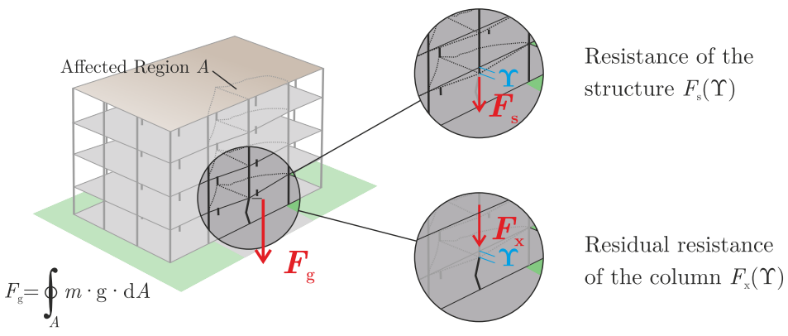Robust impact design of steel and composite building structures (Robustimpact)
Förderung:
European Commission Research Fund for Coal and Steel
The main aim of the research project ROBUSTIMPACT was the development and definition of a new combined robust design approach for impact loading and the derivation of design guidelines for advanced impact design of framed steel and steel-concrete composite structures.
In this research project advanced impact design of framed steel and composite structures is aimed at combining the two design methods “residual strength method” and “alternate load path method”.
Different types of impact scenarios are identified and the magnitude of possible impacts and plausible points of application for the impact are designed. Representative parameters were defined and quantified.

Experimental investigations on the residual strength of impacted vertical members with different support conditions subjected to high dynamic lateral loads have been performed. The determination of the residual strength, the member-structure-interaction and the demand on the joints for partially damaged elements have been examined.
The redundancy of the structure has been investigated through tests on slab, beam and joints. In order to determine the influence of the strain rate effect and the influence of strong shear forces joint and component tests under high speed loading are planned.
 The global structural response of a defined reference building is considered and a new finite joint element have been developed, able to simulate the actual behavior of partial-strength joints subjected to combined bending moments and axial loads.
The global structural response of a defined reference building is considered and a new finite joint element have been developed, able to simulate the actual behavior of partial-strength joints subjected to combined bending moments and axial loads.
Design criteria for the slab and the beam-system as well as for ductile steel and composite joints allowing the activation of alternate load paths have been developed, as to receive guidelines for advanced impact design applying the combined residual strength method and the alternate load path method.
//
